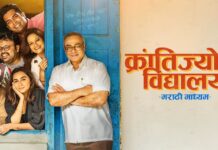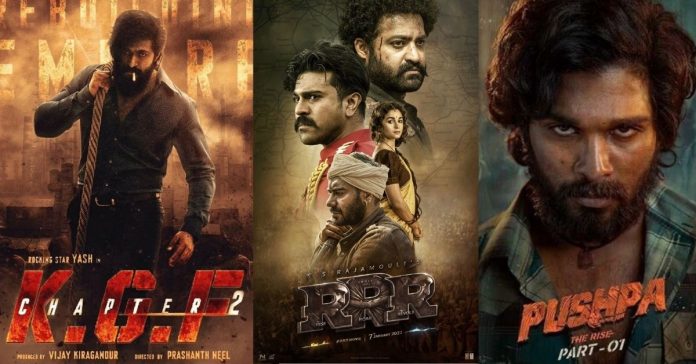So, action films don’t run in multiplexes. Right?
People are tired of the tried and tested stories, they crave for new stories even if those stories do not fit in the Indian milieu, otherwise they won’t come to the cinemas. Right?
Stars are the biggest pulling power for the audience to frequent cinemas. Right?
Wrong. Wrong. Wrong.
The stupendous success of the Hindi dubbed versions of Pushpa: The Rise Part 1, RRR and K.G.F. Chapter 2 has taught Bollywood writers, producers, directors and stars three lessons.
The first lesson is that it is wrong to assume that action films do not run in multiplexes. All the three aforementioned recent hits from the South are out-and-out action films. In fact, all the three South hits have over-the-top action and stunts. But a common factor between the three South successes is that they are not replete with mindless action. Each of the three films has a solid story-line and superb screenplays woven around those story-lines. So what Bollywood forgot to appreciate is that action films devoid of good content face rejection in the multiplexes, not action films with great content.
The second lesson is that films rooted in Indian culture and traditions work big time with the paying public. Western influences are alright but filmmakers should not forget that if Indians like traditional food, observe customs and follow rituals, why would they not like to see all this on the screen? Pushpa, RRR and K.G.F. Chapter 2 have stories which are very very Indian at heart. Their content did not seem to have a foreign hangover. In fact, the stories of all the three South hits do not boast of much novelty. But their presentations are so modern, so stylish. Yes, although the content of all the three films was rooted in Indianness, the films were technically very advanced. Many Bollywood stars, producers, directors and writers seem to have forgotten to make films for the single-screen audiences. They thought, the moolah comes from multiplexes and so, they must make films for the multiplex audiences. But they forgot to appreciate the fact that the multiplex audiences also like what the single-screen cinema audiences love. The only difference is that the public which frequents multiplexes, likes to watch films in a more comfortable environment. Their tastes as far as content is concerned is still the same, they still crave for Indian content. The so-called divide between multiplex and single-screen cinema audiences was created by Bollywood filmmakers and stars, it did not exist in the public minds. Consequently, Bollywood stars and filmmakers, who feel, they cater to the multiplex audience, have, more often than not, been making films for an audience which exists in small numbers only. If one takes a look at universal Hindi blockbusters like Dangal, Ek Tha Tiger, Tiger Zinda Hai, Bajrangi Bhaijaan, etc., one will realise that they all have content that is Indian at heart and rooted in the heartland of India.
The third lesson which the three South films have taught Bollywood is that the script is more important than the stars. The South makers attach a lot of importance to their heroes and stars, but they treat their scripts as sacrosanct. The stars of South films, who are treated like demi-Gods, dare not dictate terms to their directors as far as the film’s making is concerned. But the situation in Bollywood is different. Stars here often change scenes and even scripts according to their whims and fancies. One need not go into details of how scenes have been added to please a Bollywood star. This does not happen in the South because filmmakers treat their work as worship. One has often heard Bollywood filmmakers overlook finer details because they feel, their stars would be able to pull off the most improbable acts simply because they are stars. No South filmmaker would do that because nobody in the South film industries allows his star to feel bigger than the script.
The sooner Bollywood stars, filmmakers, producers and writers learn these three lessons, the better it would be for them. South films and South film stars are giving Bollywood films and stars tough competition. In fact, it should not be long before South stars became pan-India stars. The only way for Bollywood stars to compete with them is to emulate the plus points of the South industry people.





























